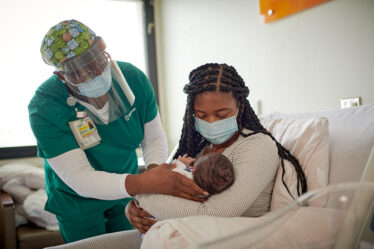
Pregnancy is an amazing experience, no doubt about it. That’s some pretty intense stuff right there, growing a human inside you. If you ask any woman who has ever been pregnant what her honest opinion about it is, she’ll likely tell you straight up: pregnancy stinks. It really does. I have swelling in my feet, constant peeing, and essentially nothing. The worst. Fits. And oh yeah, nausea also. It goes without saying that the Facebook page Mommie Pickles has dropped some seriously hilarious Pregnancy Meme that make fun of all those little pregnancy truths no one talks about enough – and each one is better than the last.
An Early Sign of Pregnancy
As a life event (divided into three trimesters of 13 weeks each), pregnancy requires substantial physiological and psychological adjustment for the mother. Multiple adaptations occur within each trimester in order to facilitate the development of the fetus. Physical and physiological changes occur to accommodate the growing fetus and prepare for parenthood. There are three categories of signs and symptoms of pregnancy: presumptive, probable, and positive. Only positive signs are 100% accurate, while most early signs of pregnancy are presumptive.
Clinical Signs of Pregnancy in the Early Stages
A missed period or loss of menstruation is the most obvious early sign of Pregnancy Meme. In spite of the fact that skipping a period is not a reliable sign of pregnancy (especially for women with irregular menstrual cycles), pregnancy should be considered if it is accompanied by nausea and vomiting (morning sickness), breast tenderness, fatigue, and frequent urination. However, the aforementioned early signs are not considered reliable indicators of pregnancy since they can all be a sign of conditions other than pregnancy. An absence of menstruation can be caused by endocrine dysfunction, early menopause, malnutrition, type 2 diabetes, anemia, long-distance running, or stress. Acute infections, food poisoning, gastrointestinal disorders, and eating disorders can also cause nausea and vomiting. A tender breast may result from premenstrual changes, chronic cystic mastitis, or the use of oral contraceptives, while fatigue may be caused by stress, anemia, or viral infections. In addition to pregnancy, the urinary frequency can be caused by numerous other factors, such as infection, cystocele, structural disorders, pelvic tumors, or even emotional stress. Thus, while a combination of early signs can suggest pregnancy, they are not reliable for confirming it. In cases when suspicion of Pregnancy Meme exists, the use of home pregnancy tests (based on the detection of urinary human chorionic gonadotropin) is recommended as an initial step. Modern, clinically sensitive urinary pregnancy tests can detect pregnancy up to four days before the expected period.
Early Pregnancy Signs Sonographically
Diagnostic ultrasound or sonography can also detect some signs of early pregnancy. At about 9.5 days after fertilization, the blastocyst stage, or early stage of an embryo, implants fully within the uterine lining. It is possible to see the subsequent enlargement of the early gestational sac on ultrasound imaging. During pregnancy, the uterine cavity remains relatively straight (undistorted), as seen by ultrasound. An intradecidual sign is a sonographic observation of the gestational sac adjacent to such a straight uterine cavity in a thick uterine lining. In the thick uterine lining, an echogenic region is visible around the 25th day of the menstrual cycle as the first sign of intrauterine gestation. Two weeks later, the first signs of embryo development can be observed, following the attachment of the two tiny bubbles – the amniotic sac and the yolk sac – to the gestational sac. Located between those two bubbles is the embryonic disc, and the structure is known as the double-bleb sign. Double-blebs and intradeciduals are the most notable sonographic signs of early pregnancy.


